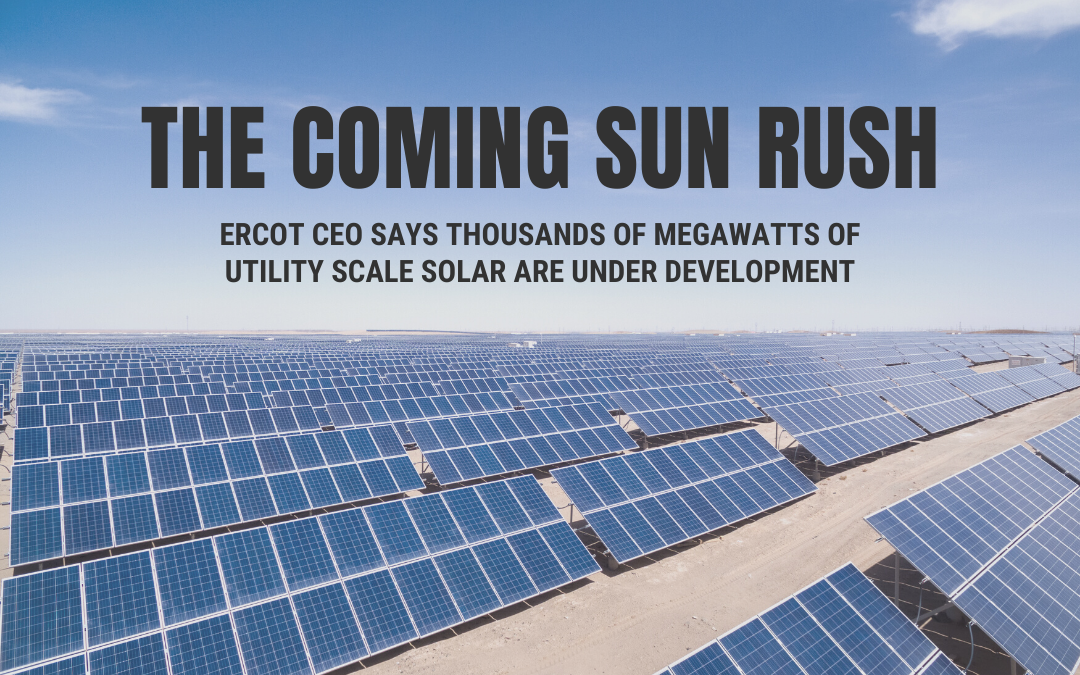“Solar is the big story here.”
— Bill Magness, ERCOT Chief Operating Officer
________________
Solar power and plenty of it — that’s what’s in store for Texas in the not-too-distant future, according to a top official with the state’s primary power grid.

ERCOT CEO Bill Magness
“Solar is the big story here,” said Bill Magness, CEO of the Electric Reliability Council of Texas, the organization that oversees the grid. During separate state legislative meetings in Austin recently Magness outlined for lawmakers what appears to be a veritable gold rush.
Here’s the background. According to the ERCOT CEO, the grid will have about 82,400 megawatts of power available this year, but only a small share will come from solar. Instead, natural gas-fired plants will provide 47 percent, coal and wind will provide approximately 20 percent apiece and 10 percent will come from nuclear plants.
Now, contrast that mix with the amount of solar projects in the pipeline. Speaking during a Jan. 30 meeting of the House Committee on State Affairs, Magness explained that solar developers have expressed interest in bringing more than 64,000 megawatts online. That’s a stunning figure considering that existing power amounts to just 82,400 megawatts.
Magness cautioned that not all of those solar units will get built, nor even most of them. But that’s not to say that what does eventually come online won’t make a big difference, he said.
As part of the planning process, generation developers must obtain interconnection agreements with transmission companies. Magness told the committee that historically about 75 percent of projects with such signed interconnection agreements continue on to completion. And he said that 15 percent of the proposed developments already have signed interconnection agreements — and that amounts to approximately 9,400 megawatts.
“And 75 percent of that is a little more than 7,000 megawatts,” said Magness. “That’s a lot to add to the system. The two nuclear units that we rely upon in the summer come in at just under 5,000 megawatts — so this is a big chunk.”
Separate witnesses speaking before state lawmakers credited steep declines in the cost of solar technology for the projected solar increase. Magness also cited the state’s excellent solar resources — there’s a lot of sun shining in West and South Texas — and he noted that many industrial buyers have expressed interest in using solar power.

